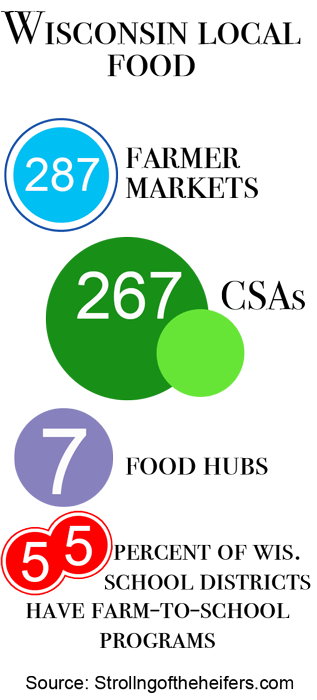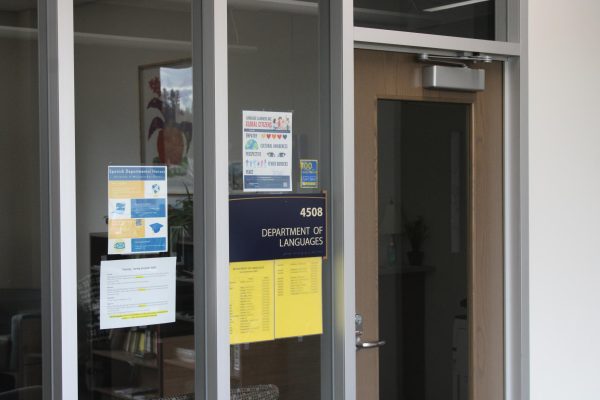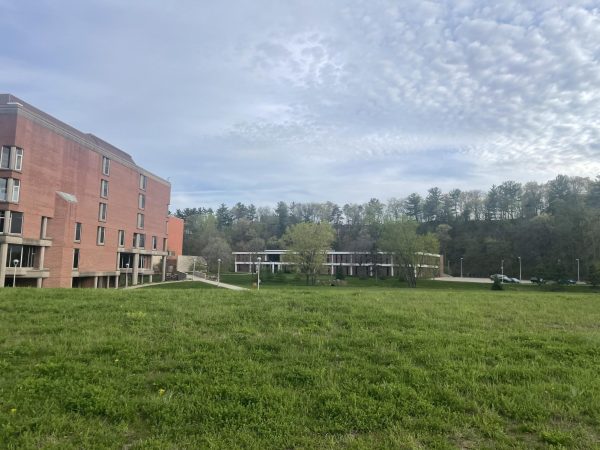Wisconsin ranks in top-10 for local food accessibility
Report based off farmers markets, Farm-to-School programs and more
April 30, 2014
Wisconsin was recently ranked eighth in the nation for local food accessibility by nonprofit group Strolling of the Heifers.
According to the group’s website, the index uses four measures for compiling the data from all states: “the number of farmers markets, the number of consumer-supported agriculture operations (CSAs), the number of food hubs — all compared on a per-capita basis — plus the percentage of each state’s school districts with active Farm-to-School programs.”
Wisconsin has 287 farmers markets, 267 CSAs, seven food hubs and 55 percent of districts with Farm-to-School programs, according to the report.
Vermont, Maine and New Hampshire took the top three spots, mirroring the 2013 rankings. Other Midwest states near the top include Iowa, ninth, and Minnesota, 13th. But Wisconsin’s south eastern border state Illinois sits at 44th.
UW-Eau Claire geography professor Paul Kaldjian said Wisconsin’s high ranking was fitting but it could have been higher if other local food opportunities were included.
“I say eighth is conservative,” Kaldjian said. “… We have a lot of local cheese production. We have a lot of local butchers. Within 45 minutes of Eau Claire I can be at any one of five butchers.”
Kaldjian, the faculty adviser to Foodlums, a local sustainable food organization at UW-Eau Claire, said purchasing local foods has a lot of positive qualities. He said economically, it compares to buying American made products.
“Economics say buying locally enhances the local economy,” Kaldjian said. “A dollar is more likely to circulate round and round and round when something is spent locally.”
He said the practice also allows people to have a closer relationship with their food, where they know it isn’t covered in chemicals or full of fake flavor.
President of Foodlums, senior Breana Meyer said buying local foods can also help with environmental impact because you do not need to travel as far to purchase foods. She said it can also help with the health of the local community.
“You are connected with your community,” Meyer said. “You build relationships with people. You are building your local economy.”
Kaldjian said urban and suburban gardens can also add to the local food production in communities in Wisconsin.
“These networks and these possibilities are expanding,” Kaldjian said. “When you grow your own tomatoes, when you grow your own things … you know of course your food is going to be healthier.”
Strolling of the Heifers states on its website it hopes to strengthen and encourage efforts of local farm and food systems across the country. Meyer said she was excited to hear the state was a strong contender on the list with those values.
“I know a lot of people who are working really hard towards (local food production growth),” Meyers said. “I think it’s definitely something we need to keep working toward.”











